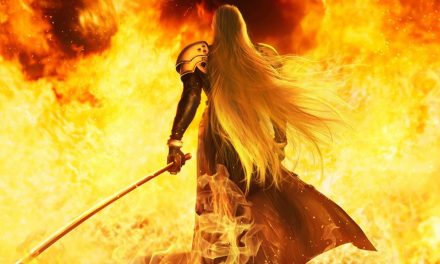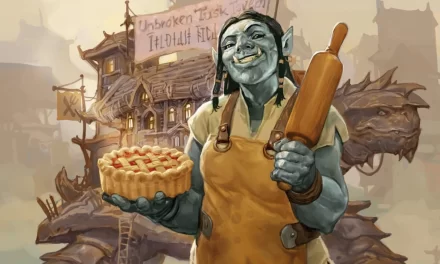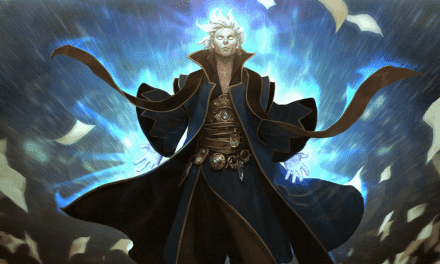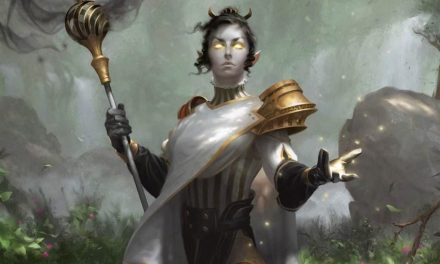There are several different types of D&D players and running games that capture each player type’s favorite experience is a vital skill for Dungeon Masters.
Learning the different types of D&D players comes with time. To be honest, most players are likely a blend of several of these!
Being able to identify players’ favorite experiences in the game and craft stories that engage them in this way leads to incredible games where everyone at the table is excited and engaged.
So let’s look at the 7 Types of D&D Players that you are bound to have in your group!
The Storyteller
The Storyteller player type loves seeing the story unfold. They like to know that there is meaning behind the actions of their character and the party.
To The Storyteller, interactions are a chance to make contributions to the overall narrative that is being formed by the group. They’ll look to the Dungeon Master for plot hooks, get excited over clever twists, and will often have their character spend downtime making new connections in the game world.
The decisions of the party truly matter to The Storyteller. They absolutely love seeing how their decisions led to certain things occurring in the story whether it’s for better or worse.
Engage these players by clearly and cleverly working them into the story.
It’s not enough for them to just suddenly appear next to the party and decide to go adventuring on a whim. They want drama, connections, motivations, and a chance to leave their mark on the world.
The Explorer
The Explorer loves finding things. This could be something big like a fabled temple of an ancient civilization or something small like a hidden treasure chamber in a noble’s estate.
Curiosity drives The Explorer and they are easily motivated with clues and legends. These players will never fail to push towards the boundaries of your story’s world as they continually wonder “what’s over there?”
For The Explorer, few things excite them quite as much as props (especially maps.) Put plenty of opportunity for them to explore with plenty of rewards for poking at your world to uncover its secrets.
When the party enters a new environment or location, give them vivid descriptions with clear landmarks that can draw their interest. The Explorer won’t be able to help themselves!
Calling attention in your description to the silhouette atop the lighthouse watching the party’s ship pull into the harbor is a great way to get The Explorer to meet the lighthouse keeper. As it just so happens, they have a map to a cursed ruin with legends of great peril and even greater rewards.
The Actor
The Actor relishes the roleplaying aspect of D&D more than anything else.
This is the player who loves doing voices, is great about avoiding meta-gaming, and probably even dresses as their character from time to time.
These types of D&D players tend to be very social. They will undoubtedly want to interact with as many NPCs as possible in your story and will almost certainly try to bring this same element out in other players at the table.
The Actor is one of the easiest player types to engage with at the table. Give them social situations and opportunities to show character development. Similar to The Storyteller, these players love knowing that their character’s background is tied to the story!
By adding plenty of potential for social encounters in your game (and probably learning how to come up with NPC voices and personalities on the fly), you’ll have no trouble engaging The Actor.
(Just make sure that everyone has opportunity in the spotlight as well!)
The Warrior
Storytelling and exploration are fun and all, but The Warrior player type has come to fight monsters and chew bubblegum…
…and they’re all out of bubblegum…
The Warrior wants to roll dice and lay waste to as many enemies as possible. They won’t hesitate to jump headfirst into a fight and love a challenge.
Engage these players by providing detailed descriptions of what is happening in combat. You’ll see their eyes light up as you describe the chaos caused by their Wizard’s Fireball or their Monk’s Flurry of Blows.
These types of D&D players also enjoy getting the chance to describe their actions as well. Borrowing a page from Critical Role DM Matt Mercer, asking the player “How Do You Want to Do This?” as they land the final blow on a boss or the last of a group of enemies will have them grinning from ear to ear.
Finally, giving The Warrior a large group of enemies (like goblins, zombies, or blights) to cut through is sure to get their blood pumping!
The Problem Solver
The Problem Solver fills many roles at the table.
They can be a strategist who loves playing with tactics both in and out of combat. This player may love situations involving puzzles or deciphering the villain’s motivations.
This character wants to use their intelligence to move the story along. The best part of this type of player is that they will, more often than not, even do most of the work for you.
Because The Problem Solver loves to see a plan come together, provide situations in the story where careful planning and execution of a strategy can lead to a quick and massive win. As the brains behind the plan, this type of player will be overjoyed!
By including puzzles, villains with complex motivations, and situations that encourage “out of the box” thinking, the Problem Solver will look forward to engineering huge story points for you!
Seriously, these players are so much fun and will often make you, the DM, seem like an evil genius as well. By developing their own ideas about the villain’s plan and motivations, they give you ammunition that you can use.
To be honest, a large amount of the most iconic villains from my home games started as mysterious villains in the shadows. As my group’s Problem Solver kept developing ideas about who this person was, it made it so much easier to come up with ideas for the villain that were sure to get the party’s attention!
The Optimizer
The Optimizer is one of the more interesting types of D&D players.
Any Google search query about “min/max players”, “munchkins,” or “power gamers” is sure to bring up a colossal list of strongly polarized opinions.
We’ll save that discussion for another time, though.
What matters right now is that the Optimizer wants to be powerful. They want the rush of gaining new levels, abilities, and powerful magic items.
So how do you engage The Optimizer?
You give them experience, abilities, and magic items!
Promises of these things are the quickest way to get the Optimizer on board for a plot hook!
Because these types of D&D players want their character to be unmistakably awesome, you should also give them opportunities to really shine. Giving them compliments even out of the game like “I can’t believe how much damage you did to that boss!” and what not go a long way with these players.
However, much like The Actor, it’s important to give everyone fair access to the spotlight while also letting these players have their moment.
The Instigator
There is a big red button in your story.
It doesn’t have any labels.
There is no way of telling what it does.
It’s just… there.
Everyone else in the party is nervous about this button.
“It’s obviously a trap” says the Wizard.
As the party turns to walk away from the button, they hear a frantic “tap-tap-tap”-ing as they turn to find this player’s character pressing the button as much as they possibly can.
This is the Instigator and, of all the types of D&D players, they have a very special place in my cold DM heart.
The Instigator keeps things exciting. They love taking risks and interacting with whatever they can in the world. The quickest way to get them to interact with something in your story (especially if it’s a Macguffin) is to put a big sign that says “DO NOT TOUCH!” next to it!
These types of D&D players are most engaged when they are able to have a clear effect on their surroundings. They relish meeting NPCs who are just as chaotic as they are and want to see the consequences (for better or worse) of their actions.
Conclusion – Types of D&D Players
Most D&D players are a mixture of several of these types of players. With that in mind, as a DM, you should look to see what type of scenarios get your players most excited. Be sure to include more of those moments to keep energy at the table high!
Personally, I find myself about evenly split between the Storyteller, Actor, and Instigator. Don’t get me wrong, I love combat and exploration too, but I especially love poking the story with a stick to see what moves.
Which of these player types are you most like? Let’s talk in the comments!









